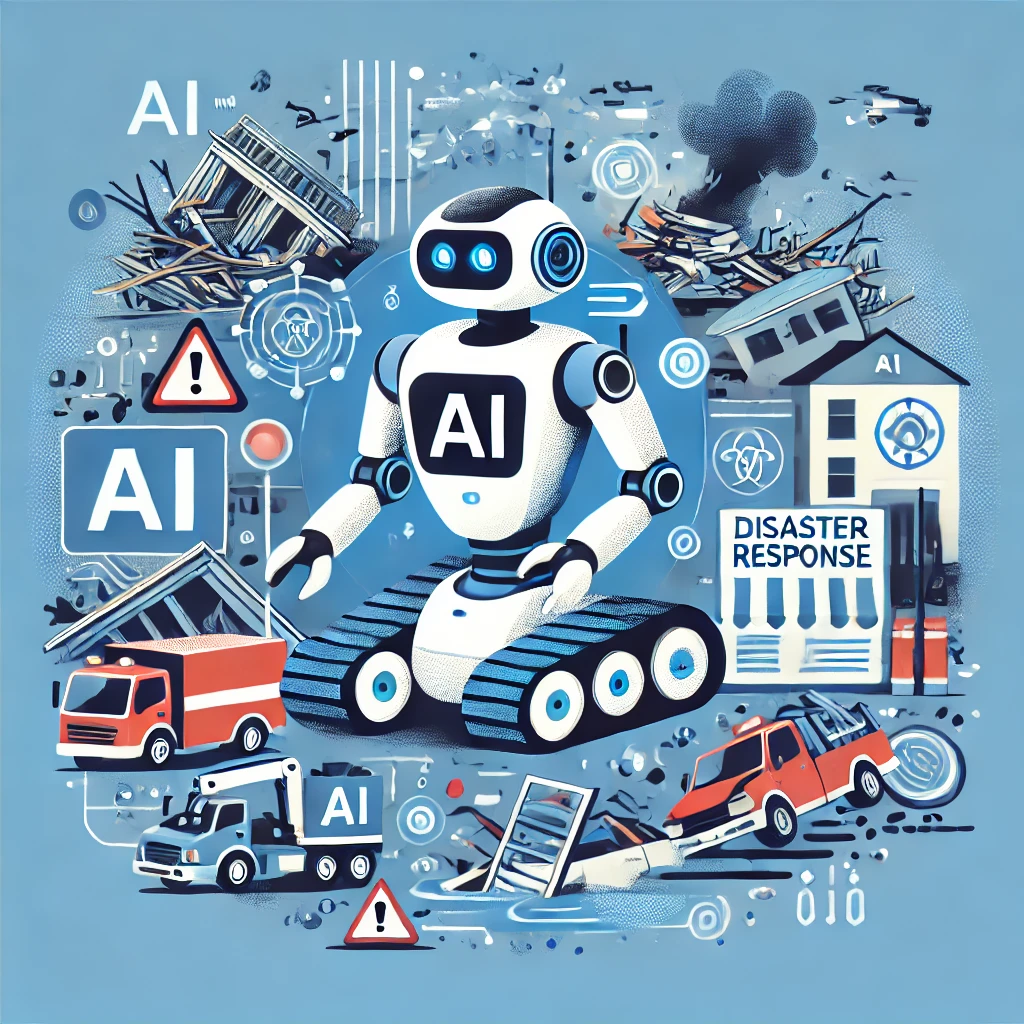AI-Powered Autonomous Emergency Response: Enhancing Crisis Management and Disaster Relief

Introduction
Emergency response systems are critical for minimizing casualties and damage during disasters, accidents, and medical crises. Traditionally, these systems rely on human coordination, which can be slow and inefficient, especially in large-scale emergencies. Artificial Intelligence (AI) is transforming emergency response by enabling faster decision-making, predictive analytics, and autonomous operations. AI-driven systems are now being deployed for disaster prediction, real-time monitoring, and autonomous rescue operations, significantly improving emergency preparedness and response.
Predictive Analytics for Disaster Forecasting
One of the most powerful applications of AI in emergency response is its ability to predict disasters before they occur. By analyzing large datasets, AI can detect patterns that indicate impending crises, allowing authorities to take preventive measures.
- Weather and Climate Analysis: AI-powered models process meteorological data to predict hurricanes, floods, and wildfires with higher accuracy than traditional forecasting methods. Machine learning models analyze historical climate patterns and real-time satellite data to identify early warning signs.
- Seismic Activity Monitoring: AI-enhanced seismographs analyze minor tremors to predict the likelihood of major earthquakes, giving people crucial time to evacuate and prepare.
- Epidemiological Surveillance: AI-driven systems track the spread of infectious diseases, analyzing trends from hospital records, social media, and travel data to predict outbreaks and recommend containment strategies.
Autonomous Drones for Search and Rescue
Drones equipped with AI-powered sensors and computer vision are revolutionizing search and rescue missions, especially in inaccessible or hazardous environments.
- Real-Time Aerial Mapping: AI-enabled drones use thermal imaging and LiDAR to detect trapped individuals in disaster zones, such as collapsed buildings or flooded areas.
- Automated Resource Delivery: Drones autonomously deliver medical supplies, food, and communication devices to areas where human responders cannot reach quickly.
- Rapid Damage Assessment: AI processes aerial images to assess structural damage after natural disasters, helping authorities prioritize rescue efforts.
AI in Emergency Communication and Coordination
In crisis situations, effective communication is vital for coordinating responders and informing the public. AI is improving emergency communication in several ways:
- Chatbots for Emergency Assistance: AI-driven virtual assistants provide real-time guidance during emergencies, offering first-aid instructions, evacuation routes, and disaster updates.
- Automated Dispatch Systems: AI optimizes 911 call centers by analyzing emergency reports in real time, prioritizing cases based on severity, and dispatching responders accordingly.
- Multi-Language Translation: AI-powered natural language processing (NLP) ensures real-time translation of emergency instructions for diverse populations.
Robotics in Hazardous Environments
AI-driven autonomous robots are playing a crucial role in disaster response, particularly in environments where human intervention is too risky.
- Firefighting Robots: AI-powered robotic fire suppressants navigate burning buildings, detecting heat sources and autonomously extinguishing fires.
- Rescue Bots in Collapsed Structures: AI-driven robotic systems, equipped with sensors and cameras, navigate through rubble to locate and communicate with survivors.
- Autonomous Underwater Rescue Systems: AI is being used in robotic submarines to conduct underwater searches for missing persons or wreckage.
AI for Medical Emergency Response
In medical crises, AI is improving the speed and accuracy of emergency response through various innovations.
- Predictive Patient Monitoring: AI analyzes biometric data from wearable devices to detect early signs of medical emergencies, such as heart attacks or strokes, and alerts emergency responders.
- AI-Driven Ambulance Navigation: AI-based GPS systems optimize ambulance routes by analyzing real-time traffic data, ensuring faster arrival at the scene.
- Automated Defibrillators and First Aid Bots: AI-powered robotic first responders assist in administering CPR or defibrillation in public spaces before human medical teams arrive.
Challenges and Ethical Considerations
While AI significantly enhances emergency response capabilities, its implementation comes with challenges and ethical concerns.
- Data Privacy and Security: AI-driven emergency systems rely on vast amounts of data, raising concerns about how sensitive information is collected, stored, and used.
- Bias in AI Decision-Making: If AI models are trained on biased datasets, they may prioritize responses unfairly, leading to disparities in aid distribution.
- Reliability of Autonomous Systems: AI-driven emergency response technologies must be rigorously tested to ensure reliability, especially in life-and-death situations where errors can be catastrophic.
Future of AI in Emergency Response
As AI technology continues to evolve, the future of emergency response will see even greater advancements:
- 5G-Enabled AI Networks: Faster communication networks will allow AI-driven emergency response systems to operate with near-instant data processing and decision-making.
- Integration with Smart Cities: AI emergency systems will work alongside smart city infrastructure, using IoT sensors to detect anomalies and automatically trigger responses.
- Enhanced Human-AI Collaboration: AI will increasingly assist, rather than replace, human responders, augmenting their capabilities with real-time data insights and robotic assistance.
AI-driven autonomous emergency response systems are redefining crisis management by increasing efficiency, improving coordination, and saving lives. As technology advances, AI will continue to be a crucial tool in building more resilient communities and enhancing global disaster preparedness.
Stay ahead with ITBusinessNews – Your trusted source for Technology and Business news. Fast & Precise




